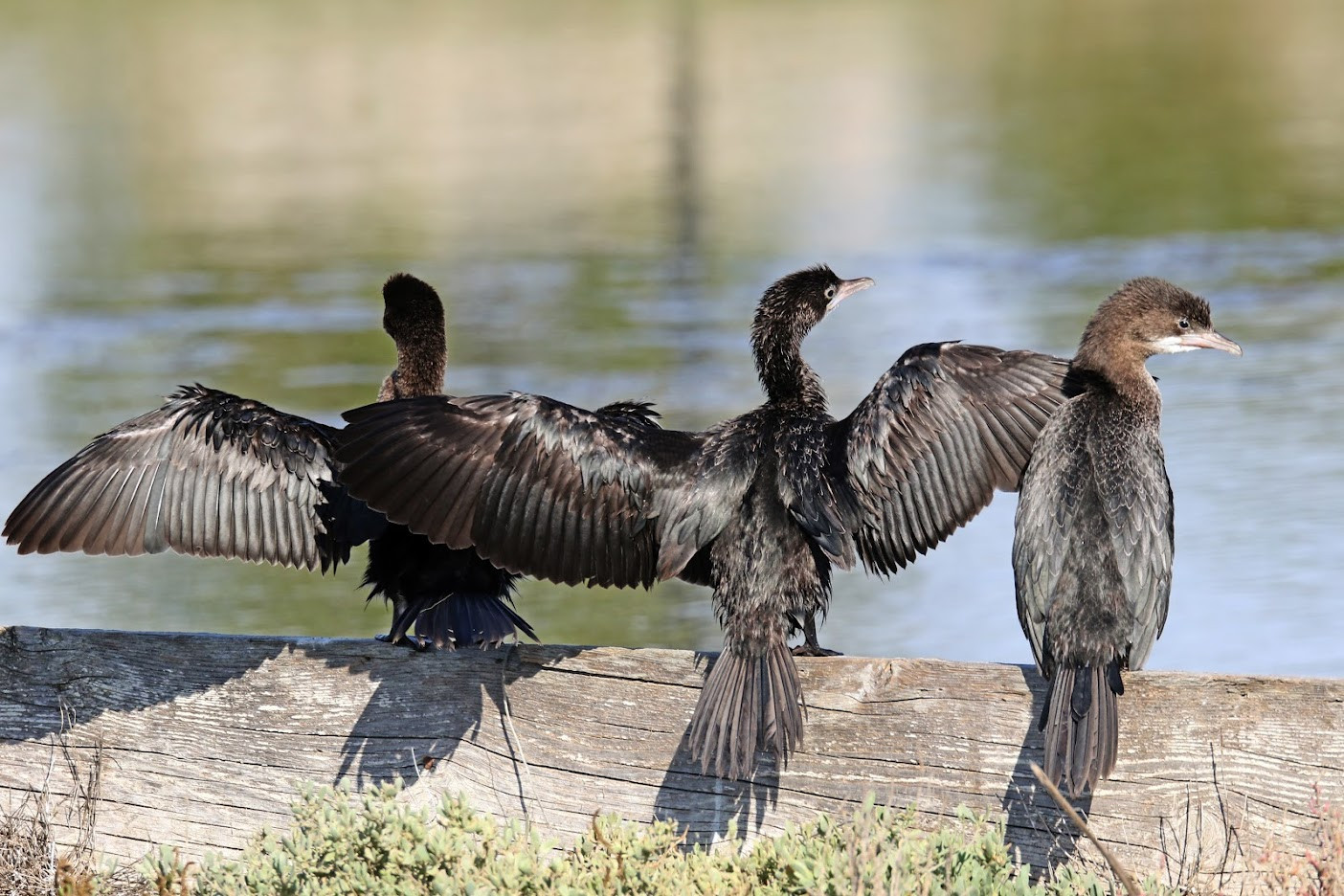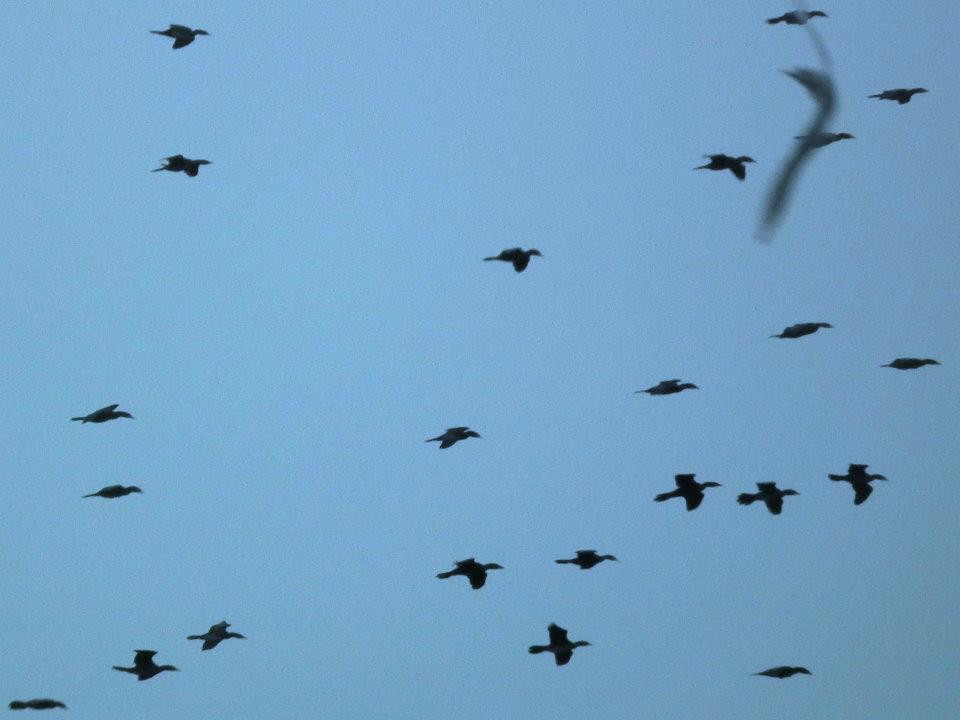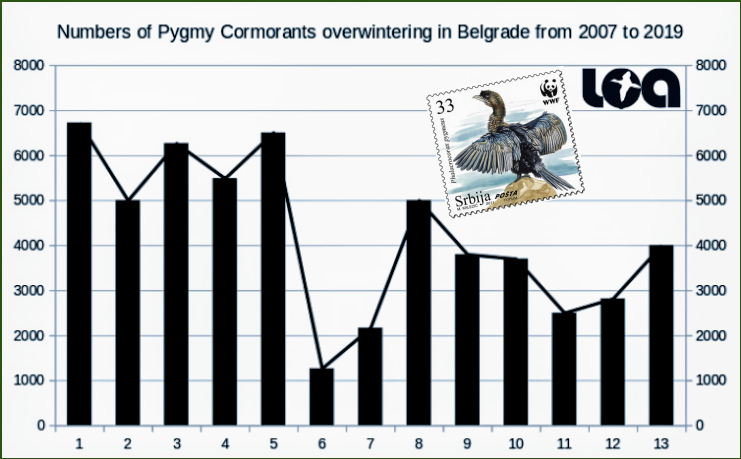Charger images
Les formats d'image autorisés sont de type jpeg, png ou gif
La taille maximale du fichier doit être de 20MB



In the last hours of daylight you can see thousands of Cormoran pygmée flying over to their roost on the Sava River.
The distribution of Cormoran pygmée spreads from South-Eastern Europe to the Caspian Sea in western Asia. Up to the mid-20th century, Cormoran pygmée were a common breeding species of wetlands around Belgrade. Until most wetlands were drained and the birds were lost, at one moment – from the whole of Serbia. With the construction of the huge Iron Gates dam on the Danube, the birds returned to breed in newly flooded river islands. And in the late 1980s they returned to Belgrade, too, but only to overwinter within the city. In the recent years, the overwintering population in Belgrade is around 4,000 Cormoran pygmée, representing 2 percent of the global population and over 5 percent of the European population.
In the last few hours of daylight, Cormoran pygmée are commuting from the river Danube back to their roost on the Sava River, to several willow groves by the Ada Ciganlija Island, using the rivers as the flight corridors. Therefore, you can observe them in their hundreds and thousands if you spend the last hour of the day observing the flight corridor and distinguishing distant black Cormoran pygmée dots from other equally distant and black Corbeau freux and Choucas des tours dots, all of them melting into treecrowns as the sunset thickens.
By both Serbian legislation and the Bern Convention on the Conservation of European Wildlife and Natural Habitats, Cormoran pygmée is a strictly protected species. In the European Union, they are at the Annex I of the Birds Directive and their habitats are therefore a potential Natura2000 ecological network sites.
For more than 15 years during which the League for Ornithological Action, a local NGO, has been following the Cormoran pygmée in Belgrade, the maximum number was recorded in the winter of 2007/2008, when the population counted 6,750 individuals. This shows the great importance of the Sava riverbanks, in the heart of a capital, for the conservation of biological diversity, which has an importance that transcends national borders.
The biggest threat to Cormoran pygmée overwintering in Belgrade is urbanisation of its riverbanks and destruction of remaining willow groves (asterisk), which sparkled the 2009 initiative by the Belgrade Land Development Public Agency, League for Ornithological Action (LOA) and the Institute for Nature Conservation of Serbia to protect the remaining roosting sites of this species.
Photos (c) Maciej Szymanski (3) and Dragan Simic (1).
Zoom in on the map and click on the "P" (parking) sign for driving directions. You can park nearby and then explore further on foot.
Public buses 15, 16, 65, 67, 68, 71, 72, 75, 77, 84, 95, and eko 1 stop at the Brankov Most (Branko’s Bridge) bus stop. From there, go down the stairs to under the Brankov Most and walk to the Sava River tourist harbour (eastern bank) dotted with cafes and restaurants.
For the Usce Park (western bank), 15 and 84, which depart from Zeleni venac, stop at the skatepark (within the Usce Park). Public buses 78 and 83 stop at the nearby Staro sajmiste (Old Fairground) bus stop, from where you may take a short walk to the Brankov Most and the park behind it.
After 13 years of campaigning by the League for Ornithological Action, in March 2022 "Winter Roosts of Pygmy Cormorants" finally became officially protected: Based on Article 42, Paragraph 8 of the Law on Nature Protection ("Official Gazette of the RS", No. 36/09, 88/10, 91/10-amendment, 14/16, and 95/18-other law and 71/ 21) The Ministry of Environmental Protection informed the public about the procedure for initiating the protection of a natural area of the III (third) category, as the Protected Habitat "Winter Roosts of Pygmy Cormorants".
"Winter Roosts of Pygmy Cormorants" NR is located within the city of Belgrade, on the banks of the Sava River (asterisk), and includes coastal willows in four physically separate locations: near the New Belgrade heating plant and shipyard, on the left bank of Ada Ciganlija and near the Ada bridge.
The natural asset that is under protection is the only wintering place of the rare and endangered species of the Pygmy Cormorant (Microcarbo pygmaeus) in Belgrade. It is declared a protected habitat in order to preserve the natural conditions and amenities of the locality where the wintering population of Pygmy Cormorants roost, as well as to ensure a permanent ban on disturbing and endangering individuals of this wild species, which has the status of a strictly protected species both at the national and international level. Due to its importance, the area in question is one of the priorities for the protection of natural values in Europe. (Institute for Nature Conservation of Serbia)
Still, Winter Roosts of Pygmy Cormorants are potentially threatened by the city officials' plans for the nearby construction of a pedestrian-cycling bridge between Omladinskih Brigada St. and Ada Ciganlija Island (W of the roosting groves) and its infrastructure.
Votre feedback sera transmis à l’auteur.rice de cette zone et à l’équipe éditoriale de Birdingplaces, qui l’utiliseront pour améliorer la qualité des informations. (Vous souhaitez publier un commentaire visible en bas de page ? Fermez cette fenêtre et choisissez l’Option 1 : « Publier un commentaire, un conseil ou une observation ».)
Veuillez fournir des suggestions d'améliorations ou d'ajouts au texte de ce site ornithologique.
Veuillez fournir vos suggestions d'améliorations ou d'ajouts à la carte.
Veuillez fournir des suggestions d'améliorations ou d'ajouts à la liste des oiseaux.
Cliquez sur l'icône de l'oiseau () Insérez les noms d'oiseau dans votre langue. Ils seront automatiquement traduits pour les autres usagers !